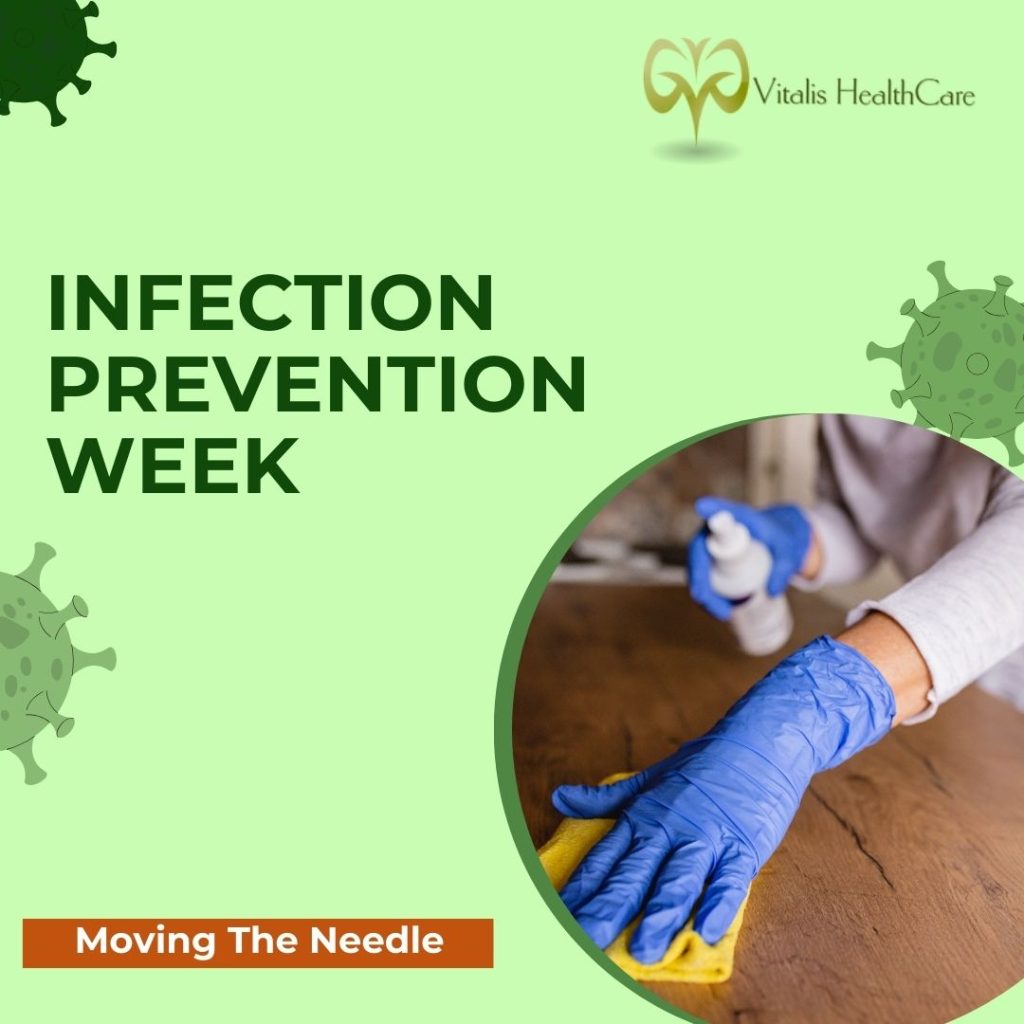Infections are diseases caused by pathogenic microorganisms such as bacteria, parasites, viruses or fungi. This disease can spread directly or indirectly from one person to another, with severity ranging from mild to fatal. In the United States, over 10 million people visit physicians on the basis of an infection, and over 7 million deaths around the world were linked to a bacterial infection. It is evident that infections could lead to rabid conditions that claim the lives of millions yearly. Especially after the experience of the COVID-19 pandemic, the fatality of infections cannot be overemphasized. In recognition of this year’s International Infection Prevention Week, this article aims to highlight the vital role cleaning and disinfection plays in preventing infection.
Cleaning Vs Disinfecting
Cleaning involves the removal of dirt, debris, and some germs from surfaces using soap or detergents and water. It does not necessarily kill germs, but by removing them, it lowers their numbers and reduces the risk of spreading infections. Cleaning is often the first step before disinfecting. Disinfecting on the other hand, refers to the use of chemicals to kill germs on surfaces. Disinfectants, such as alcohol-based solutions, bleach, or hydrogen peroxide, can eliminate bacteria and viruses when applied correctly. Disinfection is especially critical in high-touch areas like doorknobs, light switches, and shared devices where pathogens are more likely to spread.
Importance of cleaning and disinfecting
There are a number of benefits to proper cleaning and disinfecting. Some of them include;
- Breaking the Chain of Infection: The spread of infectious diseases is often described as a “chain of infection.” This chain consists of several links: a pathogen, a reservoir, a mode of transmission, and a susceptible host. Cleaning and disinfection act at multiple points in this chain, reducing the chance of pathogens surviving in the environment and being passed to others.
- Preventing Cross-Contamination: Pathogens can live on surfaces for varying lengths of time. Viruses like the flu can survive for up to 24 hours on hard surfaces, while some bacteria can live for several days. Regular cleaning reduces the risk of cross-contamination, where an individual touches a contaminated surface and unknowingly spreads the pathogen to others or onto themselves.
- Protecting Vulnerable Populations: Certain groups, such as the elderly, young children, or individuals with weakened immune systems, are at greater risk of infection. In environments where these individuals are present, such as nursing homes or hospitals, effective cleaning and disinfection protocols are necessary to protect their health.
- Combating Antimicrobial Resistance: Proper cleaning and disinfection also play a role in fighting antimicrobial resistance (AMR), a global public health challenge. By consistently using appropriate disinfectants and following manufacturer instructions, we can reduce the spread of drug-resistant bacteria. Poor hygiene practices, such as inadequate disinfection or misuse of cleaning products, can contribute to the survival of resistant pathogens, exacerbating the AMR problem.
Tips for effective cleaning and disinfecting
- Choose the Right Products: Not all cleaning agents and disinfectants are created equal. It’s important to use EPA(Environmental Protection Agency) approved disinfectants proven to kill the specific pathogens you’re targeting. Alcohol-based disinfectants (with at least 70% alcohol) and bleach solutions are commonly effective against a wide range of viruses and bacteria.
- Follow the Manufacturer’s Guidelines: Whether using a household disinfectant or a hospital-grade cleaner, always read and follow the product’s instructions for proper use. This includes adhering to recommended contact times (the amount of time the surface should remain visibly wet with the disinfectant) to ensure it effectively kills pathogens.
- Focus on High-Touch Surfaces: These include doorknobs, countertops, light switches, phones, and other frequently touched areas. These surfaces should be cleaned and disinfected regularly, especially during times of increased infection risk, like flu season or in the midst of a pandemic.
- Promote Hand Hygiene: While cleaning and disinfection are crucial, they should be accompanied by proper hand hygiene. Practice frequent handwashing with soap and water, or use hand sanitizers with at least 60% alcohol when soap isn’t available.
Cleaning and disinfection are foundational components in preventing infections. In the context of global health threats like COVID-19, flu pandemics, and hospital-acquired infections, maintaining proper hygiene practices has never been more crucial. By implementing effective cleaning and disinfection protocols, we not only protect ourselves but also those around us, particularly the most vulnerable members of our communities.
At Vitalis Healthcare, we provide compassionate home healthcare services to individuals living with or recovering from chronic illnesses or conditions. Our team of registered nurses and experienced caregivers are constantly and efficiently trained to provide the best quality care to our patients.
If you or your loved one is in need of professional home care services, contact us today!
Phone Number: 240.716.6874
Email: info@vitalishealthcare.com
Location: We provide our services in every county in the State of Maryland, United States of America.
Office Address: 8757 Georgia Avenue Suite 440 Silver Spring, MD 20910


